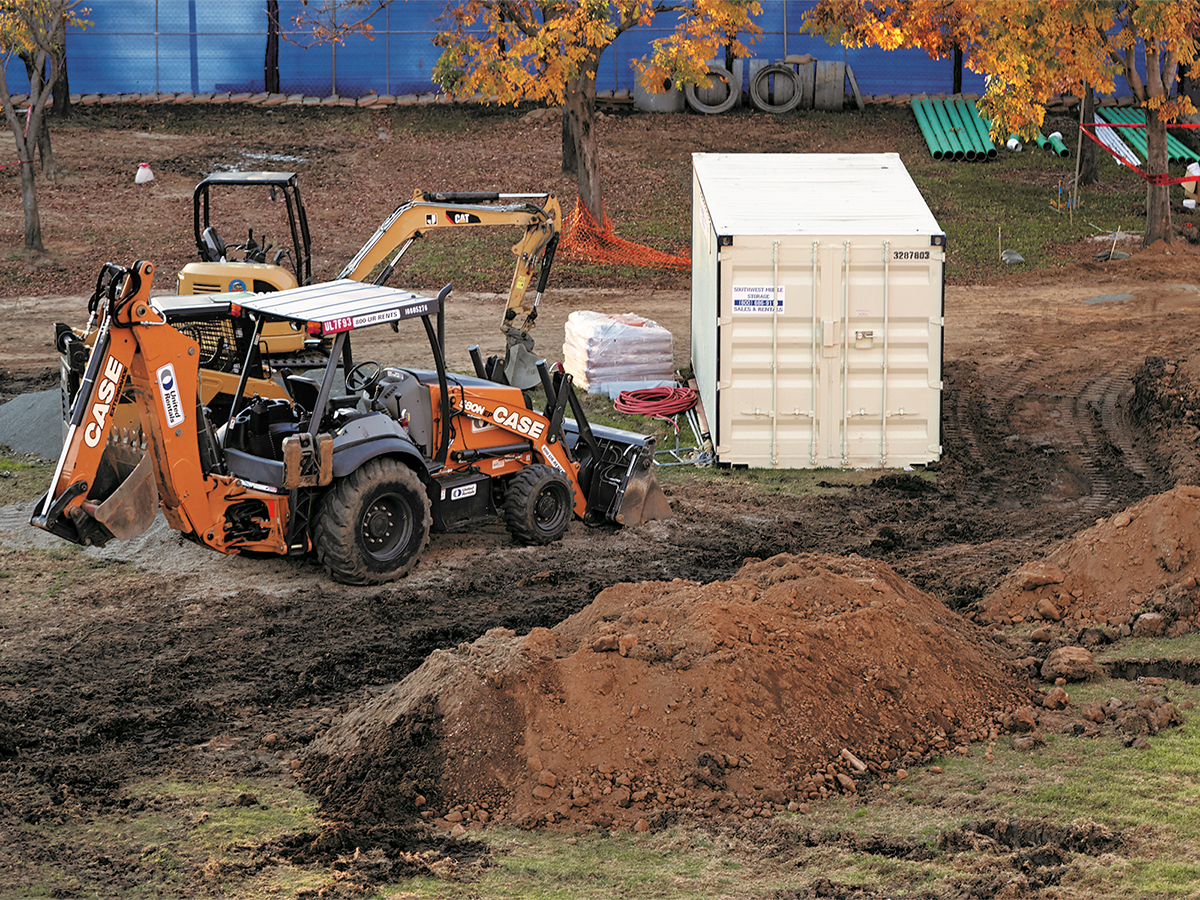If one spent time on the western part of UCR’s campus during the fall quarter, they would have noticed some interesting changes to the landscape. To the common passerby, it started inconspicuously enough. A red layer of cloth had been wrapped around the bottom of two tall trees outside the student services building. A few weeks later a massive blue construction fence was erected, closing off large areas of campus and limiting student movement. Step one of the construction project in question was to deroot and chop down two old, large and beloved oak trees. UCR administration needs to plan more carefully in the future so no more trees are chopped down in the name of university expansion.
There are a few obvious reasons why UCR should stop cutting down trees. First and foremost, the action suggests a deep disrespect for the natural environment. The two trees, both estimated to be in their 50s, are nearly as old as the campus itself. Cutting down these historical trees leaves a spiritual scar on the landscape of the campus along with a physical one — a reason indigenous students fiercely spoke out against the destruction of the trees and laid the red cloth around them. During talks with indigenous students the administration agreed to save the wood from the trees and use it in the construction project soon to be erected over the grave of the mighty oaks. While this has been seen as a sort of compromise, the decision to use the wood for building is utilitarian in nature, which is disrespectful toward the trees and cannot make up for the damage caused.
Climate change and ongoing campus sustainability efforts are also exemplary of why the killing of these trees was a mistake. Trees are important carbon sinks in the atmosphere. To combat climate change, the world needs more trees, not less. Considering that the UC system has set a goal of carbon neutrality by 2025, the removal of trees is not only thoughtless but harmful. While administration has committed to planting other trees, it will take time before they are able to offset the loss of the oaks. This issue is made more infuriating as there were surely ways to plan around the trees or include them in the eventual building project.
Lastly, the removal of the trees has limited recreational and student mobility as well as degraded the aesthetic quality of the campus. The blue walls are, frankly, an eyesore, and moving about lower campus has become difficult. The green space of the open grass lawns and the shade provided by the lovely oaks were common picnic and napping spots, and student organizations have held meetings and events under them for decades. This underscores a consistent issue with UCR’s administration: not involving students in decision making. The recent commencement location controversy immediately comes to mind. The tree chopping affects students, and perhaps it would not have happened if students had been in the room affecting the decisions. Instead, the administration once again asks for forgiveness, not permission.
The murder of the trees is a tragedy. It is spiritually insulting, ecologically reckless, and gives little consideration to students. The administration needs to do better and students must hold them accountable. Hopefully, future building projects will be more responsible.








